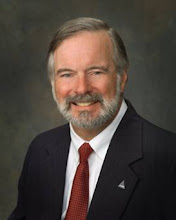 Exactly one month ago today, as I made my way west from Timişoara and Covasinţ, Romania, toward Fellbach, Germany, I paid a visit to the University of the Danube - Krems, in the beautiful city of Krems an der Donau, Austria.
Exactly one month ago today, as I made my way west from Timişoara and Covasinţ, Romania, toward Fellbach, Germany, I paid a visit to the University of the Danube - Krems, in the beautiful city of Krems an der Donau, Austria.I arrived about three in the afternoon a bit hungry, a bit thirsty, and dying for a rest room, so my first stop in Krems was at a cafe, where I enjoyed a delicious snack of apple strudel and coffee, along with a glass of water.
Snack eaten, I strolled into the city in search of a bank, for I had not a Euro to my name. I walked perhaps 500 meters through the heart of this quaint Danubian town.
 |
| There is a statue of a man on his knees before a buxom beauty. |
 |
| Is he proposing? |
 |
| I believe the story has him begging for forgiveness. |
In the street I met two young men on bicycles who gave me directions to the Arte Hotel, where I ended up spending two most comfortable nights.
 |
| Shirl and I stayed here in 2010, and she well remembers the verdant hill just behind the hotel. |
Turning to the rear of the hotel, one sees the view above.
The Piano
After a most interesting and productive series of meetings at the University, I walked down from the hotel to a pub called "Piano," sat at an outdoor table, and ordered a beer, and a bowl of chili (a dish Shirl had enjoyed on our past visit there). After not more than three minutes, a young fellow came along and sat one table away, facing my table, and also ordered a beer. I asked him, "Are you alone?" He replied, "For the time, yes. I am expecting my girlfriend after her meeting ends."
Naturally, I invited him to my table, which invitation he happily accepted. Introducing ourselves, I learned he was Vlad, from Iaşi, Romania. We ended up spending the evening in conversation (over, maybe, one or two more beers). The evening ended with a nightcap at the hotel, where he and his Romanian girlfriend, a young veterinarian whose professional meeting had brought them to Krems, were also staying.
The Motto
Are you in the least surprised that I should happen to befriend a Romanian couple in Krems, Austria? (If you are a faithful reader, of course you are not surprised.) Which reminds me that I have recently coined a new motto:
Go where you want to go, see what you want to see, and never leave a roadside diner without having made a new friend. - D. C. McDougall, 2013












